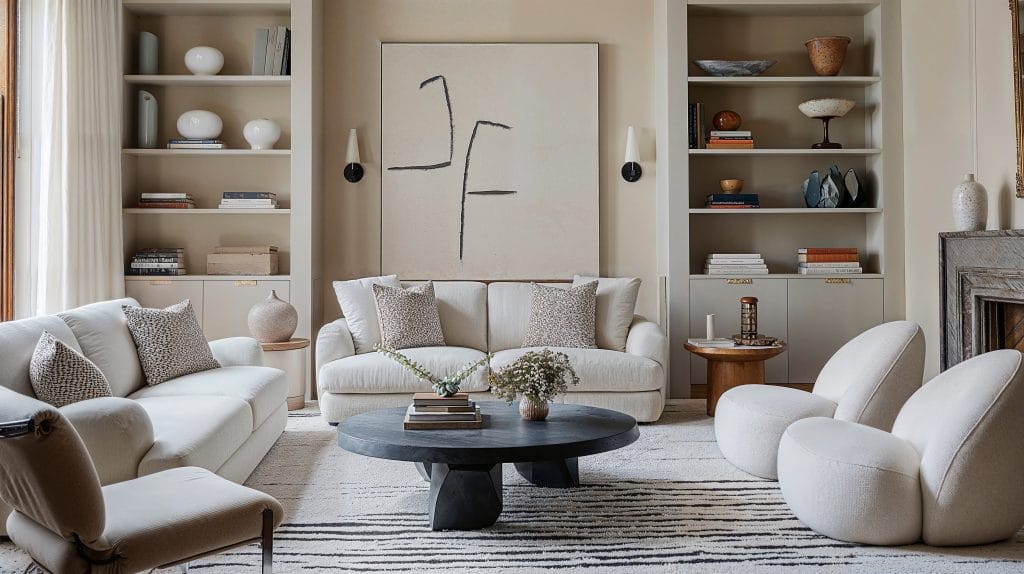Top-tier interior design firms specialize in high-end transformations.
Wiki Article
Change Your Home With Essential Principles of Inside Layout and Appearances
The art of changing your home via the important concepts of interior decoration and aesthetics needs a thoughtful approach that harmonizes color, equilibrium, and spatial understanding. By comprehending the impact of shade concept and the relevance of texture and patterns, one can create rooms that are not just aesthetically appealing but also deeply individual. Attaining this equilibrium involves even more than plain design; it includes a strategic plan and an eager understanding of just how each aspect communicates within an area. As we discover these foundational concepts, take into consideration exactly how they might redefine your understanding of home and personal expression.Understanding Shade Concept
Comprehending the principles of color theory permits designers to produce spaces that reverberate psychologically with owners while meeting functional requirements. Each group plays a vital role in establishing harmony within a space.The psychological influence of colors is profound; cozy shades such as reds and oranges evoke energy and heat, while trendy tones like blues and greens promote calmness and harmony. Additionally, making use of complementary colors boosts aesthetic passion, producing striking contrasts that can boost a room's appeal.
Neutral shades, on the various other hand, function as a functional backdrop, allowing other design aspects to beam. It is necessary to think about aspects such as illumination and the area's purpose when picking a color combination, as these can modify the understanding of shades throughout the day.
Eventually, a well-considered shade scheme can transform an area, fostering a feeling of comfort and style that lines up with the residents' choices. Mastery of shade theory is, for that reason, an essential ability for any type of interior developer intending to develop harmonious and welcoming atmospheres.
Attaining Balance in Layout
Just how can designers attain a feeling of stability in their rooms? Attaining balance in style is fundamental to developing harmonious interiors.Unbalanced equilibrium, on the other hand, depends on varying components that still achieve a natural appearance. This technique enables more vibrant and informal setups, offering rate of interest while maintaining balance. By very carefully choosing varying sizes, colors, and structures, developers can develop a visually compelling area that really feels well balanced yet energetic.
Radial equilibrium highlights a main prime focus with aspects emitting outward. This style is generally seen in round designs, where furnishings and style develop a cohesive border that attracts the eye internal.
Eventually, accomplishing balance calls for thoughtful factor to consider of scale, proportion, and the relationships in between components. interior design firms. By masterfully applying these balance concepts, developers can change areas into settings that feel both aesthetically pleasing and functionally unified, enhancing the general experience for residents
Value of Spatial Understanding

A keen feeling of spatial awareness enables designers to recognize focal factors within a space, guiding the viewer's attention to crucial features while maintaining a general feeling of unity. It also aids in the calculated positioning of lights, which can dramatically influence the perception of room and state of mind. Comprehending spatial partnerships makes it possible for the designer to provide to the certain requirements of inhabitants, making certain that each location serves its intended objective without endangering aesthetic appeals.
Inevitably, spatial recognition is vital for taking full advantage of the capacity of any interior room. By very carefully thinking about the interaction between measurements, format, and function, designers can produce atmospheres that not just meet practical needs however additionally evoke a sense of convenience and charm, boosting the overall living experience.
Including Structure and Patterns
Accepting a varied series of appearances and patterns can significantly boost the visual and responsive appeal of an indoor area. The calculated usage of different materials-- such as timber, steel, material, and stone-- creates deepness and rate of interest, making a space really feel a lot more welcoming and dynamic. Combining smooth surfaces with rough appearances can develop an equilibrium that attracts the eye and engages the senses.When including patterns, take into consideration both scale and rep. Large patterns can work as centerpieces, while smaller, subtle designs can enhance other elements Visit Website without frustrating the area. Layering patterns, such as pairing flower paddings with striped throws, includes complexity and a sense of harmony if executed attentively.
It is additionally essential to maintain a cohesive shade scheme, ensuring that appearances and patterns function together as opposed to complete for interest. By selecting a few vital textures and patterns, you can develop a combined visual that reflects your personal style while improving the general ambiance of the space. Inevitably, the cautious consolidation of these aspects can transform an ordinary room into an advanced atmosphere abundant with personality and warmth.
Individualizing Your Room
Developing a space that reflects your character is essential to achieving an absolutely inviting setting. Customization in indoor style permits you to infuse your one-of-a-kind design and passions right into look here your home, changing it from a plain shelter right into a refuge that talks to that you are. Begin by selecting a shade palette that resonates with your emotions-- bold shades can energize, while soft tones use peace.Incorporate art work and design that show your enthusiasms, whether it be traveling, nature, or abstract ideas. Displaying individual collections, such as books, photographs, or keepsakes, can evoke cherished memories and develop prime focus within an area. In addition, consider customizing useful pieces, like upholstered furnishings, to align with your visual preferences.

Final Thought
To conclude, the transformation of a home with the necessary principles of interior decoration and aesthetic appeal demands a detailed understanding of shade concept, equilibrium, spatial understanding, structure, and customization. Each aspect contributes dramatically to producing a harmonious and useful living setting - miami interior design. By thoughtfully integrating these principles, individuals can enhance the visual charm and psychological vibration of their rooms, eventually cultivating a home that shows one-of-a-kind identities while supplying convenience and practicalityReport this wiki page